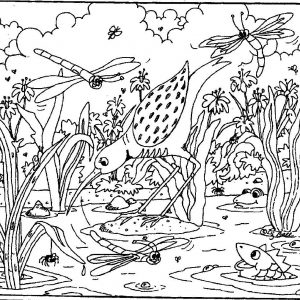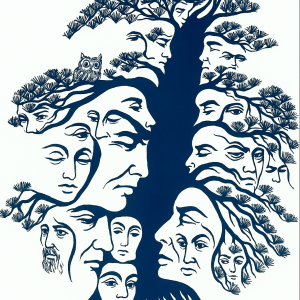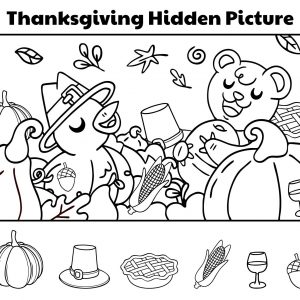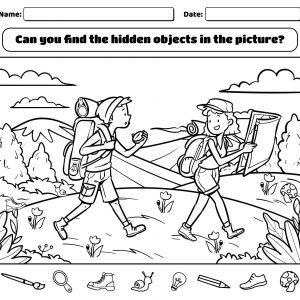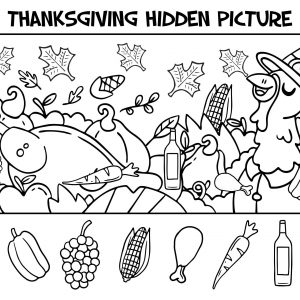The Hidden Faces Illusion: Exploring the Art of Perception in Optical Drawings
Introduction: The Magic of Seeing Beyond the Surface
At first glance, the image looks like a simple sketch of a face. But if you look closer, more details begin to emerge—multiple smaller faces cleverly woven into the outline. This is the essence of an optical illusion: it challenges your eyes, your mind, and even your imagination. The drawing you see here isn’t just a piece of art; it’s a visual puzzle that reveals how perception can shift depending on focus. Let’s dive into the fascinating world of hidden face illusions and explore why our brains love these tricky visuals.
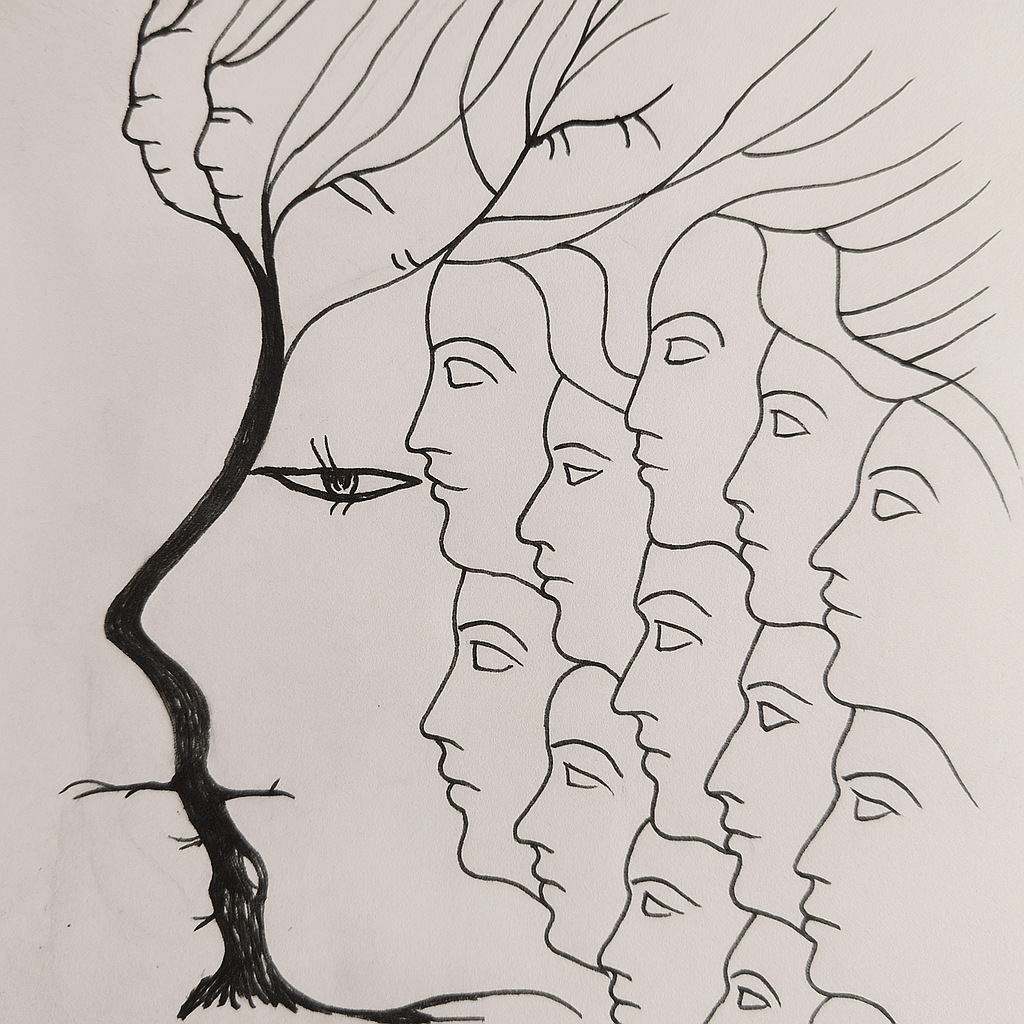
The Allure of Optical Illusions
Why are we so drawn to illusions like this? Because they make us question what we see. Our eyes process shapes, lines, and patterns instantly, but the brain interprets them in multiple ways. Optical illusions create a playful conflict between reality and perception, sparking curiosity. It’s like magic on paper—except the magician is your own brain.
The Power of Hidden Faces in Art
Hidden face illusions are among the most captivating forms of visual art. Artists use lines, symmetry, and contrast to disguise smaller faces within a larger portrait. In this drawing, the left side reveals a bold profile of a single face, while the right side blooms into rows of smaller profiles, almost like leaves growing from a tree. It’s not just clever design—it’s a metaphor for complexity within simplicity, showing how one perspective can unfold into many.

Why Our Brains Love Finding Patterns
Our brains are hardwired to search for faces everywhere. Ever noticed how you can spot a “face” in clouds, buildings, or even coffee foam? This is called pareidolia, the tendency to perceive familiar shapes where none actually exist. Hidden face illusions tap into this instinct. They play with our natural urge to find meaning, rewarding us with a sense of discovery each time a new face appears.
Symbolism Behind the Illusion
This particular image can be seen as more than just art—it’s also symbolic. The large face might represent identity or individuality, while the many smaller faces could stand for different versions of ourselves, the people who influence us, or even the hidden layers of the human mind. The tree-like lines at the top add another dimension, suggesting growth, connection, or wisdom branching out over time. Isn’t it fascinating how a simple sketch can spark such deep reflections?

Benefits of Engaging with Visual Puzzles
Looking at and analyzing illusions like this isn’t just fun—it’s also good for your brain. Here’s how:
- Sharpened Observation Skills: The more you look, the more details you uncover.
- Enhanced Creativity: Illusions encourage you to think outside the box and embrace multiple perspectives.
- Stress Relief: Focusing on visual puzzles can calm the mind, like a mini mental escape.
- Improved Cognitive Flexibility: Training your brain to see things differently boosts problem-solving skills in everyday life.
How to Train Your Eyes to Spot Hidden Details
Want to get better at noticing illusions and hidden details? Here are a few tips:
- Take Your Time: Don’t rush. Let your eyes wander slowly.
- Change Your Perspective: Sometimes tilting your head or stepping back helps.
- Look for Repetition: Artists often hide faces in repeating shapes, like the curved profiles here.
- Focus on Negative Space: Pay attention to the empty areas around lines—they often reveal hidden forms.

The Connection Between Art and Psychology
Optical illusions like this bridge the gap between creativity and science. Artists design them to trick the eye, while psychologists study them to understand how vision and cognition work. Every illusion is a mini-experiment, showing us that what we “see” isn’t always the truth. Our brains fill in gaps, interpret contrasts, and sometimes make mistakes—reminding us that perception is as much about the mind as it is about the eyes.
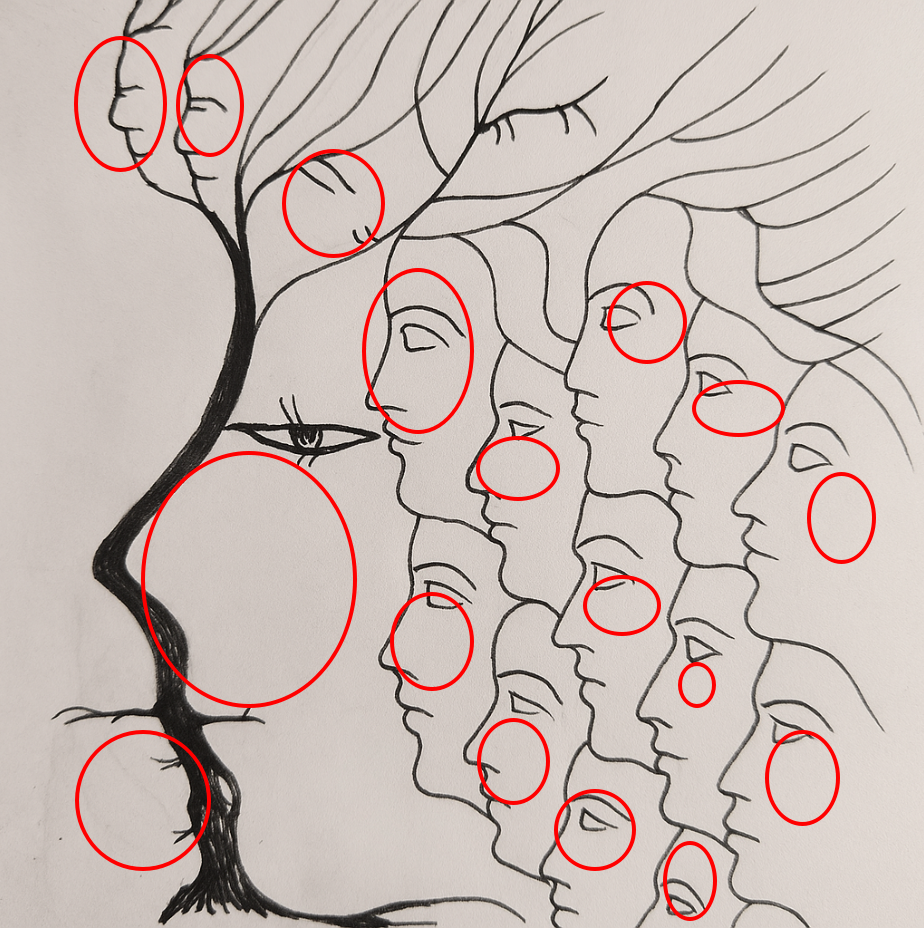
Conclusion: The Beauty of Seeing Differently
This hidden faces drawing is more than a clever sketch—it’s a reminder that reality isn’t always straightforward. Depending on how you look, you might see one face, many faces, or even a tree of life branching into human forms. That’s the power of perception: it teaches us to slow down, observe carefully, and embrace multiple interpretations. Next time you come across an optical illusion, don’t just glance—let your imagination wander. Because sometimes, the most fascinating truths are hidden in plain sight.
